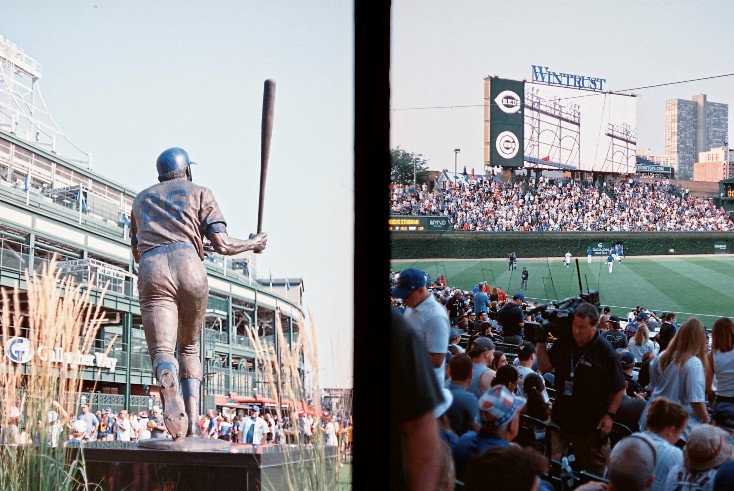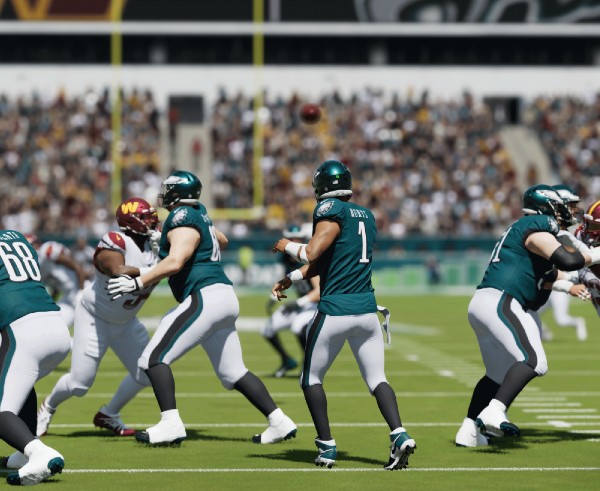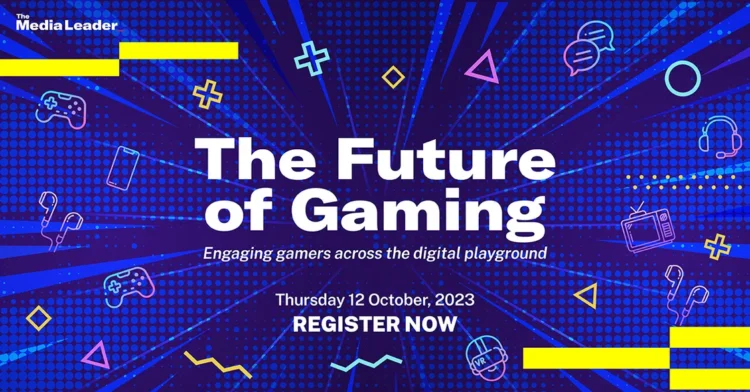‘Space to grow’: why sports teams are investing in gaming adtech

Feature
A number of sports team owners have invested in or partnered with gaming adtech companies this summer as they see synergies between their existing brand partners and the burgeoning gaming market.
Sports teams and rights holders are getting into video gaming.
In the past few years and especially this summer, a number of teams, ownership groups, and leagues have formed partnerships with gaming adtech companies to help advertise in games to expand their audience targeting efforts as young fans grow up watching less and less linear TV.
In-game advertising company Anzu has received investment from the owners of the NBA’s Indiana Pacers through their parent company, as well as from Harris Blitzer Sports & Entertainment, a sports group which owns the NHL’s New Jersey Devils, NBA’s Philadelphia 76ers, and, through co-founder Josh Harris, the NFL’s Washington Commanders. Anzu has also received, as part of a $48m Series B fundraising effort, an investment from Marquee Ventures, a venture capital fund anchored by the parent company of the MLB’s Chicago Cubs, owned by the Ricketts family.
In June, Fenway Sports Management, the marketing arm of Fenway Sports Group, which owns the MLB’s Boston Red Sox, Premier League’s Liverpool FC, and the NHL’s Pittsburgh Penguins, entered into a partnership with gaming marketing company Livewire. “Online gaming is the next frontier for brands looking to connect with passionate audiences in a targeted and measurable way,” said Fenway Sports Management co-head David Beeston when the deal was inked.
Bidstack, another in-game advertising company, this July also announced a partnership with the Commanders and NFL PRO ERA, the first fully licensed NFL and NFLPA virtual reality game, which can be played on Meta’s Quest VR headset.
‘If you could crack it, you have a lot of space to grow’
Sports game franchises have been among the most popular video game titles for decades. Fifa (which will now be called EA Sports FC this year following a lapse in licensing agreement between football’s world governing body and publisher Electronic Arts), NBA 2K, Madden, and MLB: The Show have consistently ranked as some of the best-selling titles on consoles for multiple generations.
As part of offering a realistic gaming experience, in-game advertisements have almost always existed in these titles, as real world advertisements can be found plastered all around stadiums. Given that for many years such ads had to be created and programmed during the development period and could not be programmatically inserted in real time, they often featured in-house ads. For example, in-game ads for early noughties-era title Madden primarily featured the company that developed the games, EA Tiburon, rather than other brands. When EA tried to make the jump into branded advertising in later editions, it received blowback from players over frequency concerns, even if gamers were willing to see such ads in principle.
In recent years, in-game advertising technology has developed to the point where brands can purchase advertising programmatically. That, alongside gamers’ continued receptiveness to viewing ads in sports games, has caught the eye of team owners and investors themselves.
How WPP and NBCU-backed Anzu wants to bridge gaming’s ‘gap’ with marketing
“It’s no longer just a teenager in their basement,” Erik Hammer, managing partner at Marquee Ventures tells The Media Leader. “The audience is going mainstream; people are finding more value with their time playing games than watching TV and movies.”
Hammer, who was an early-stage investor in Anzu for a prior venture capital firm before being tapped to run Marquee Ventures this March, is confident in his investment. Speaking to The Media Leader from the Wrigleyville neighbourhood of Chicago where the Cubs play, Hammer says that previous attempts at gaming adtech had “a tech layer that was missing,” with ads being “too disruptive” to gameplay and audiences too immature to convince marketers to allocate significant amounts of their budget to the gaming space.
“But now [Anzu CEO] Itamar [Benedy] is bringing in brands like L’Oréal,” Hammer explains. “So you can see that transformation.”
Whereas adtech investing had, according to Hammer, gone out of favour in recent years due to an overabundance of fraud and lack of competition outside of Meta, Google, and more recently Amazon, gaming offers a new medium. “If you could crack it, you have a lot of space to grow.”
Gameplay from MLB The Show 23 showing how advertisements are currently placed along virtual outfield walls.
Gaming adtech companies, meanwhile, argue that advertising to gamers, especially young gamers who are also fans of live sports, should be considered something of a necessity. “It’s clear that younger fans in particular have different preferences when it comes to the way they consume entertainment, and ultimately, sports,” says Bidstack founder and CEO James Draper. “So finding ways to engage with them in games is a must.”
Draper adds: “While some of the same audience may be reachable elsewhere, it’s increasingly unlikely that they’re engaged with formats like linear TV or even social media beyond TikTok and Snap.”
Gaming ‘can supplement [advertisers’] investments in baseball and the Cubs’
Sports games are particularly well suited to offering advertising inventory without detracting from the user experience. “Sports games are all about realism,” says Hammer, “and there’s nothing more real than seeing the ads in the game that are in a real sports stadium.”
The added benefit of sports teams being investor in gaming adtech is that a firm like Marquee Ventures, though it is officially a separate entity from the Cubs, can nevertheless leverage the team’s existing position with its brand partners and ad-agency relationships to expose them to gaming as a medium to explore. Hammer, for example, described bringing agency buyers to an event at Wrigley Field to show them how gaming “can supplement their investments in baseball and the Cubs.”
Such added exposure is key for an industry that still struggles to educate advertisers on the value its their offering.
“Sports teams and rights holders are still figuring out how to make this new platform part of their commercial offering to sponsors,” admits Draper. “And, surprisingly, given gaming’s reach of over 3 billion people worldwide, there continue to be misconceptions that it’s a media channel limited to specific ages or genders.”
While Hammer is confident companies like Anzu have solved a number of the technical challenges that have been a barrier to advertising in games in the past, he is also clear-eyed that there is a ways to go before the investment is considered a success story, and that comes down to how it communicates its opportunity to brands and publishers.
“From the advertisers I have talked to and from [seeing] Anzu’s case studies, the return on investment is there,” says Hammer. “But it’s just [about] getting people comfortable; a lot of ad buyers are used to just putting a Google or Facebook buy in. There’s still education that needs to be done.”

Screenshot from Madden NFL 24. Credit: Electronic Arts.
The same goes for working with game publishers who may be wary of littering their games with ads: “Anzu has to tell the story to publishers that you can monetise your games and content without being obtrusive or degrading their gameplay.”
For his part, Benedy has often tried to sell in-game advertising as akin to digital out-of-home (DOOH), but with using virtual inventory rather than physical billboards. Benedy tells The Media Leader: “In the OOH world, they like to say if it’s great content, it’s a free social ad. The same principle applies here.”
Given the vast gaming ecosystem, which also includes audiences for professional esports tournaments and Twitch streamers, Benedy believes that significant earned media value can be obtained by placing an ad in the right game; an argument he is making to clients regularly.
‘Gaming and gambling is a grey area’
As sports teams and leagues look to invest more in gaming, however, they will need to proceed with care when it comes to the murky area of sports betting and video game gambling practices.
Both video games and sports have seen an influx of revenue tied to gambling in recent years. As game publishers have sought to bolster revenues, loot boxes — a consumable virtual item that can be redeemed for a randomised selection of in-game items — have become increasingly popular, prompting backlash over concerns gambling tactics are being used to target especially young players. In the UK, the Department for Digital, Culture, Media and Sport (DCMS) has recommended the Government take steps to prevent the sale of loot boxes to minors and to make sure games with loot boxes are labelled as having gambling mechanics. However, the DCMS has made no further attempt to adapt existing gambling laws to target loot boxes. The US has also yet to pass any legislation regarding loot boxes.
The ‘art’ of using social media to achieve earned media value for OOH
Whereas sports gambling has a long history in the UK, the US has a more chequered past with the practice. Sports betting was banned in the US in 1992, a law that was ultimately ruled unconstitutional by the Supreme Court in 2018. In the five years since, the majority (37) of US states have passed laws to legalise sports gambling.
This means that the overlap between video gaming, sports, and gambling presents an opportunity and a risk to games publishers and sports teams and rights owners, especially as the market is still relatively nascent in the US.
“Gaming and gambling is a grey area to me,” Hammer says. “Because you don’t have all the structures to prevent nefarious activity [right now].”
Marquee Ventures hasn’t invested in gambling, though it may be open to in the future. “We’re trying to be sensitive to that,” Hammer adds.
Draper admits that Bidstack has worked with major gambling companies like Ladbrokes and Betsson on video game activations, though he says that for any such campaigns, Bidstack uses “our age-gating technology to ensure ads are only served to suitable audiences.”
In general, however, Draper doesn’t think the overlap between gaming and gambling is as strong for sports teams and rights holders as simply placing an ad in-game. “The age-sensitive nature of gambling content would often mean they’re excluding the very audiences they’re looking to target,” he argues.
Benedy, for his part, compares gambling to tobacco companies, and tells The Media Leader he is “cautious about incorporating gambling brands.”
“We have a pretty thorough compliance process here,” he says, adding that he expects regulation of gambling to come to video games in short order.
To Benedy, that could be one more benefit for advertisers. “I think it’s going to be another pressure point on the gaming companies to find new revenue channels.”
Next month, The Future of Gaming is bringing together over 200 industry experts who will discuss the most exciting campaigns and strategies used to engage with 2.7 billion gamers.





